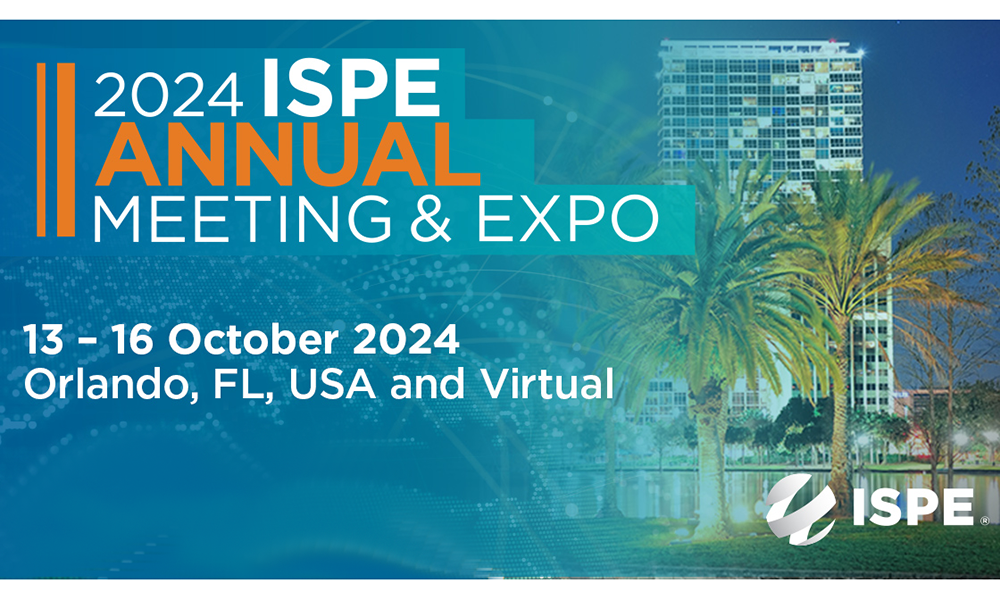FDA on AI in Pharmaceutical Manufacturing
At the 2024 ISPE Biotechnology Conference, held in Boston, Massachusetts, USA, in June, Sharmista Chatterjee, PhD, director of the US Food and Drug Administration’s (US FDA) Division of Pharmaceutical Manufacturing Assessment III, Office of Pharmaceutical Quality (OPQ), Center for Drug Evaluation and Research (CDER), delivered a keynote address titled “The Role of Artificial Intelligence (AI) in Pharmaceutical Manufacturing.”
Chatterjee began by reminding attendees that everyone deserves to have confidence in their next dose of medicine and that pharmaceutical quality aims at assuring the availability, safety, and efficacy of every dose.
“That is what drives us every day within CDER,” she said.
Her keynote address focused on the role of AI in pharmaceutical manufacturing and told attendees that AI is a priority technology within the Framework for Regulatory Advanced Manufacturing Evaluation (FRAME) program.
“AI is going to play a significant role in pharmaceutical manufacturing in the next five to ten years,” she predicted.
Using the definition provided by the White House in 2023 (Executive Order on the Safe, Secure, and Trustworthy Development and Use of Artificial Intelligence), Chatterjee defined AI as “a machine-based system that, for a given set of human-defined objectives, makes predictions, recommendations, or decisions influencing real or virtual environments.”
Chatterjee subsequently laid out CDER’s three advanced manufacturing programs. to include US FDA’s Emerging Technology Program (ETP), established by CDER in 2014, and is concerned with assessment and inspection, a program for Advanced Manufacturing, Science and Research, and US FDA’s FRAME program, which focuses on developing regulatory policies for advanced pharmaceutical manufacturing evaluation.
Chatterjee explained that ETP aims at facilitating emerging technologies by emphasizing early engagement before and during submission and assessment as well as early interactions that are not specific to a particular product or regulatory submission.
“Our research arm is involved in research into advanced technologies, and we fund and collaborate with various academic institutions,” she added.
Chatterjee continued by outlining the FRAME program’s four priorities. The first priority is to initiate a science and risk-based analysis by seeking and analyzing input to gain an understanding of advanced manufacturing technologies. The second priority addresses risk and ensures that regulations and policy are compatible with future advanced technologies. The third priority is to clarify expectations while the fourth priority is to ensure that global regulatory practice is clear to stakeholders with regard to international regulatory harmonization.
She then traced the US FDA’s efforts to examine the use of AI in pharmaceutical manufacturing. AI became a CDER priority and focus beginning in 2019, which led to a CDER AI steering committee and the beginning of an AI strategy in 2020. The US FDA instituted a community of practice in 2021, offered an updated AI strategy in 2022, and began that strategy’s execution in 2023, which is continuing in 2024 and extending beyond 2024.
In reviewing AI’s potential benefit for pharmaceutical manufacturing, she identified AI’s potential for reducing the number of experiments; monitoring the input and output of data and quality and process control; real-time monitoring of equipment and root cause analysis as well as identifying corrective and preventative actions (CAPAs); and forecasting product demand as well as analyzing production schedules and organizing inventory.
She also addressed AI’s potential benefit for regulators, noting that the US FDA already uses AI to:
- Translate documents
- Screen adverse events reports
- Forecast the volume of incoming regulatory submissions
While international regulators are already using AI to:
- Detect false or misleading drug information
- Scan scientific literature.
- Identify safety signals
- Respond to public inquiries
Chatterjee also identified some apparent risks that can emerge when using AI. She said that since AI is a “data-driven model” it is important to develop models with accurate, reliable data that is representative of the process you are trying to model. She asked questions regarding how data should be stored, asking how we are going to ensure the security of the information stored in and what standards should be developed to ensure the management of the data not just once but for the entire product life cycle.
She noted that CDER released two AI discussion papers on the role of AI in pharmaceutical manufacturing and sought feedback from stakeholders.
“This past September, we held a two-day workshop with participation from regulators, industry, and academia,” explained Chatterjee. “We discussed the various roles for AI and talked about model maintenance.” She posed three key questions: “How we are going to ensure the security of the information stored in the cloud?” “What sort of regulatory oversight is needed for AI models?” “What are the lifecycle considerations for AI models?”
She added that about 40 percent of companies are already using AI in various capacities, and some are expecting to use AI for pharmaceutical manufacturing in one to three years.
Chatterjee also noted that after the workshops, AI stakeholders have provided the US FDA with some feedback.
“They are suggesting standards for developing standards for good data management practices and seeking clear guidelines on best practices for machine learning models, including development, validation, and maintenance of AI models,” she explained. “They are also seeking regulatory expectations for managing AI models provided by third parties and seeking clarification regarding implementation of AI with current pharmaceutical quality systems frameworks.”
Chatterjee said that the US FDA recommends that the models can be assured to remain fit for the context of their use and that changes in models and changes in model performance (such as post-approval changes in management plans) should be reported to the agency with an option to use tools outlined in the International Council For Harmonisation of Technical Requirements For Pharmaceuticals For Human Use (ICH) publication, “Technical and Regulatory Considerations For Pharmaceutical Product Lifecycle Management” (Q12).
In conclusion, Chatterjee said that to facilitate AI adoption, stakeholders are seeking international harmonization on AI implementation regulatory expectations.
“Supporting AI within the agency is a multi-center initiative,” concluded Chatterjee. “I’m sure we all agree that AI has the potential to affect the robustness of the manufacturing process and our supply chain, and the take-away message is that FDA’s emerging technology program has been there for about ten years, and it’s been very effective.”
She finished by saying that those with emerging technologies should reach out to the agency and engage early with regulators.
“The FDA supports implementation of innovative technologies and uses a science and risk-based approach,” she said. “This is a journey – it’s a new journey for all of us and we are here to work with you to bring these novel technologies to the market.”
Disclaimer
This is an informal summary of a presentation on 17 June 2024 at the 2024 ISPE Biotechnology Conference in Boston, Massachusetts, USA. It has not been vetted by any of the agencies or regulators mentioned in this article, nor should it be considered the official positions of any of the agencies mentioned.




